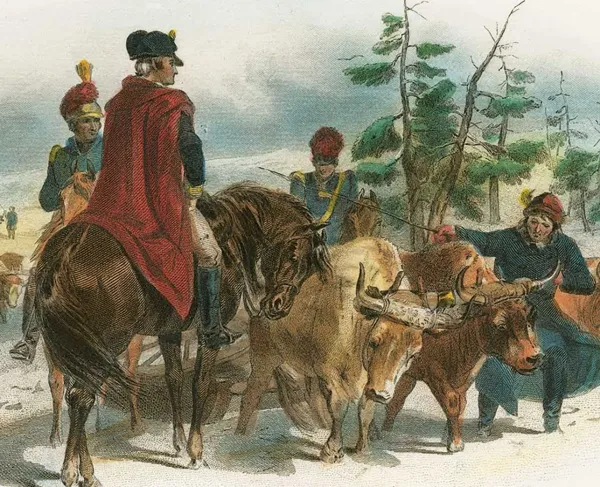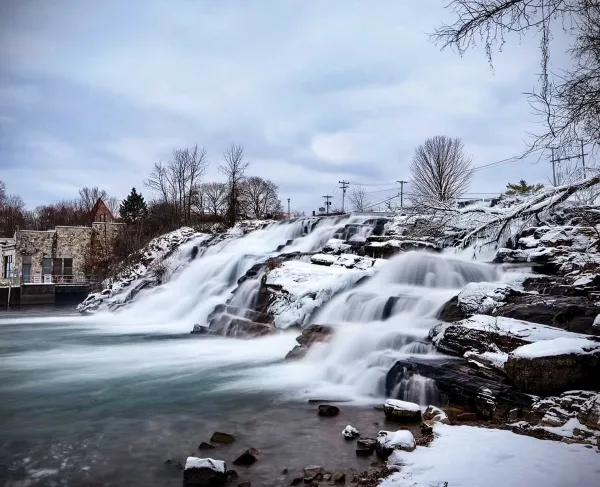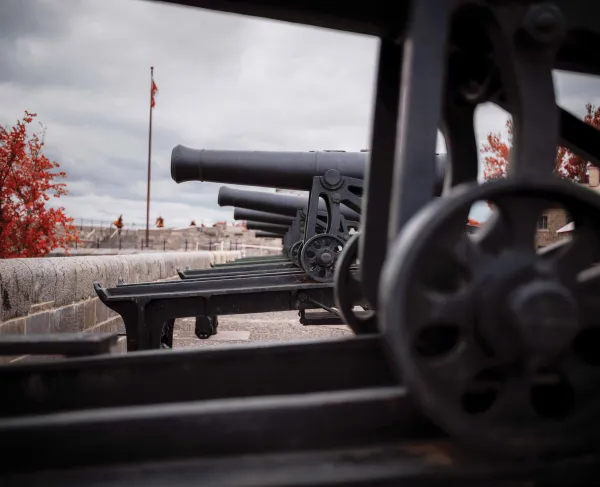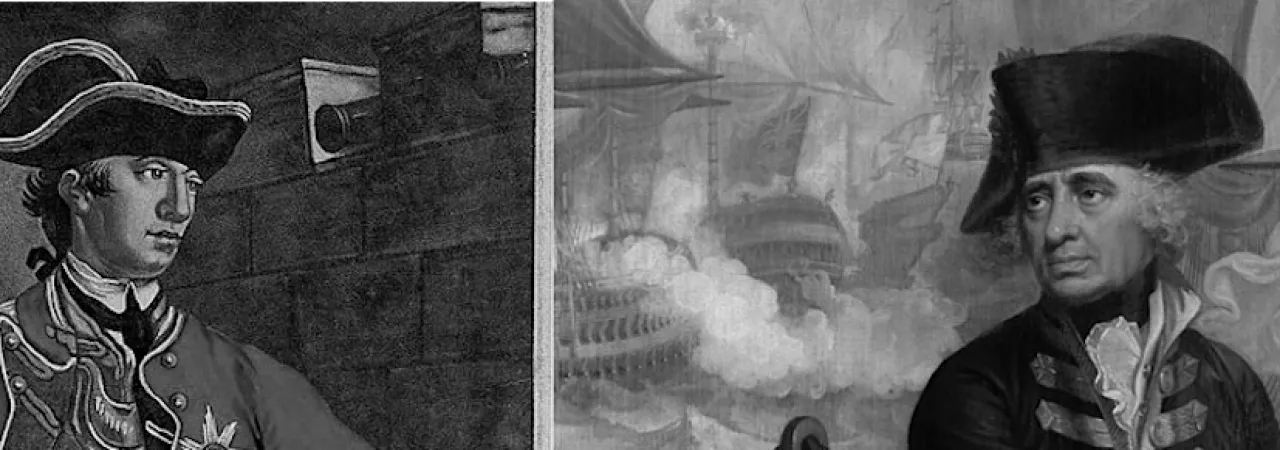
Over the span of two major conflicts, no set of siblings played more of a role in American history than Great Britain’s Howe brothers. Through their own successes and failures, George, Richard, and William Howe helped shape the story of America’s formation during the French and Indian War and Revolutionary War.
George Howe in the French and Indian War

Like many men who would serve as members of the British military’s high command, the Howe brothers’ family was extremely well connected. Their father, Emanuel Scrope, Second Viscount Howe, was a prominent member of parliament and served several years as the Royal Governor of Barbados before dying there of disease in 1735. George Augustus, the eldest son, and Third Viscount after his father’s death was born in 1725 and was destined for a quick rise in the British army. By age twenty, George was made an ensign in the 1st Foot Guards and served as an aide-de-camp to the Duke of Cumberland, witnessing firsthand the carnage of the Jacobite Rebellion and War of Austrian Succession.
When the Seven Years’ War erupted across the globe in 1756, George was commissioned colonel of the 60thRegiment of Foot (Royal Americans), sent to the British colonies, and subsequently given command of the 55thRegiment. Well-regarded by William Pitt and members of Parliament, he was promoted to brigadier general and accompanied Major General James Abercromby as his second-in-command for the campaign to capture Fort Carillon (Ticonderoga) from the French in 1758.
George quickly became a favorite of the colonial provincials participating in the expedition. He admired their irregular style of waging war and endeavored to learn all he could from them in the field, all the while eating without silver utensils, sleeping on the ground, and even washing his uniform as they did. In turn, the colonial troops revered him for his “robust Soldier-like Constitution, his bold, enterprising Spirit, and every other military accomplishment.” “His soldiers,” one peer observed, “love and fear him, and are willing to comply with his Commands, because he first sets them an Example.”
Brigadier General Howe was the most beloved British regular officer to serve in the colonies during the French and Indian War. He was brave, innovative, and most importantly, relatable to the men serving beneath him. Unfortunately, his time-fighting in America was brief. On July 6, 1758, while personally leading an advance force against French resistance near Bernetz Brook, several miles outside the walls of Carillon, Howe was struck in the breast by a musket ball and killed instantly. “In Lord Howe,” one British officer wrote, “the soul of General Abercromby’s army seemed to expire.”
The following year, the Massachusetts Assembly, in appreciation of the elder Howe brother, appropriated funds for a memorial to be erected in Westminster Abbey. His younger brothers, William and Richard, never forgot this act of kindness. It was now up to them to continue their family’s heroic story.
Richard and William Howe in North America during the Revolution
Like their older brother, Richard (1726-1799) and William (1729-1814) were destined for military service from a young age. The former joined the Royal Navy in 1740 and the latter the Army in 1746, both seeing service in The War of Austrian Succession and the French and Indian War. In June 1755, while captain of the Dunkirk, “Black Dick” (as Richard was known for because of his dark complexion) led a pursuit near Nova Scotia of straggling transports that were carrying French regulars to Canada and succeeded in capturing eight companies. The brief exchange of fire was the first naval action of what would become the Seven Years’ War the following year. Richard’s noble service continued into that conflict and over the decade that followed he witnessed a meteoric rise in rank, eventually being appointed the commander of Britain’s naval forces in North America in February 1776. Beside his brother, he would work to bring the colonists’ rebellion to an end.
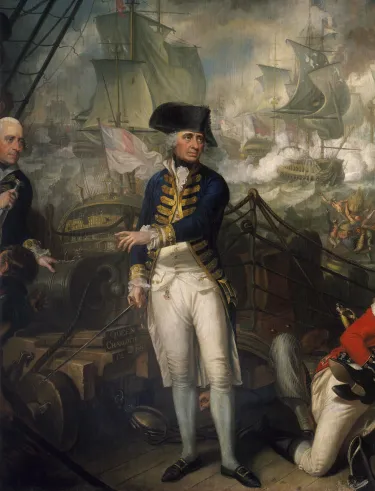
William, too, saw his share of fighting in the French and Indian War, commanding the 58th Regiment of Foot during the siege of Louisbourg in 1758, catching the eye of then Brigadier General James Wolfe. The next year, Howe led light infantry under Wolfe at Quebec and served gallantly under Jeffry Amherst as well near Montreal.
Following the end of hostilities, while holding various posts and being continuously promoted, Howe served as a Member of Parliament from Nottingham. As tensions between Britain and her American colonies grew, both Howes urged the government to show restraint and avoid an armed confrontation with their kinsmen across the pond. These efforts would obviously fail as Massachusetts, the tinder box, set history aflame in April 1775 at Lexington and Concord. The following month, Major General William Howe, along with fellow major generals John Burgoyne and Henry Clinton, landed in Boston to help quell the rabble-rousers. Though still reluctant to take up arms against any of the colonists, he knew his duty to king and country outweighed those feelings. Maybe peace without any more bloodshed would still be possible.
General Howe’s Revolutionary War experience truly began during the afternoon of June 17, 1775. That single day would do more to shape his operational and tactical approach to waging war against the Americans than any other day of the conflict. Ordered by General Thomas Gage, William led a force of 2,600 men against the rebel defenses situated along the Charlestown Peninsula, most notably atop Breed’s Hill. Three successive assault waves advanced against the American lines as the red-coated bodies piled up in front. Howe personally led the movements against the enemy center, and finally, His Majesty’s forces were successful, driving the Americans across Charlestown Neck. Howe was victorious, but at the cost of over 1,000 of the king’s men. From that day on, to Howe, the massive frontal assault against strong enemy defenses was out of the question. Costly victories like Bunker Hill would not be sustainable.
William Howe’s tenure as commander of the British army in America (he assumed this position in September 1775) can best be summarized as one of immense tactical and operational success, but an overall strategic failure. Though has land forces had beaten the Continental Army again and again in New York and Pennsylvania, he always failed to deliver the crushing blow that would prevent the Americans from fighting another day. The reasoning behind this is quite simple: Howe was incapable of recognizing that the rebels’ true center of gravity—what physically or morally kept the revolution going—was the Continental Army and not the major American cities.
Evacuating Boston in March 1776, Britain’s attention immediately turned to the capture of New York City, which he believed to be the commercial and financial center of the colonies. Sailing from Halifax, Howe arrived offshore of New York City in late June, and his brother, Richard, was united with him the following month. By mid-August, the Howes had amassed the largest British operational force every mustered in the hemisphere—over 30,000 men and thirty warships armed with 1,200 guns and 10,000 seamen. By November, George Washington’s American army had been ousted from New York and was in full retreat, though still intact, across New Jersey.
General Howe’s forces had dealt some heavy blows to the Americans, but he failed to follow-up the tactical successes with any decisive action. Washington was able to escape and retain his army so the fight may be carried on. New York City was now in British hands, but the war was far from over. Rather than pursuing the enemy and pinning him against the Delaware River, Howe’s forces went into winter quarters, believing that the American army and the revolution would simply collapse on its own in the coming months. This was not the case.
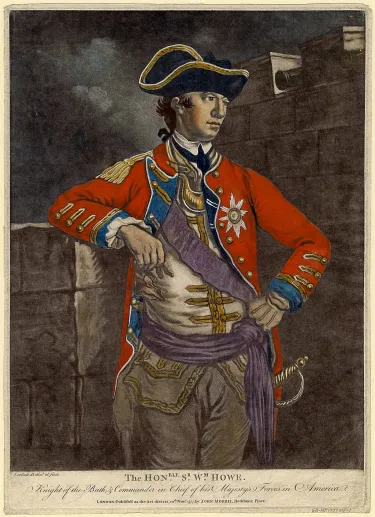
The following year, 1777, the Howes shifted their focus toward carrying the war to the doorstep of Philadelphia—the political heart of the revolution—in an attempt to capture yet another major city. Admiral Howe’s ships carried his brother's land forces by water into Maryland, and a repeat of the previous year’s campaign commenced. The British bloodied Washington’s men at Brandywine and Germantown, and Philadelphia fell to Howe, but nothing changed. The Continental Congress fled elsewhere to continue their business, and so did the Continental Army, both still very much alive.
Although the Howes had failed to end the war on the battlefield and at sea, there was always a hope that they could bring peace through words, and not bloodshed—they still did not want to fight those who they believed were their countrymen. On multiple occasions, especially while in New York, the brothers opened negotiations for reconciliation, but they all failed.
The biggest blow to these peace efforts came at the Billopp House in Staten Island on September 11, 1776. There, Richard Howe personally met with John Adams, Benjamin Franklin, and Edward Rutledge. In regard to reconciliation with the Crown, Franklin admonished Howe, “We cannot now expect happiness under the domination of Great Britain. All former attachments have been obliterated.” Too much blood had been spilled by that point and the following year for any hope of peace.
By May 1778, with the war far from won, General Howe resigned from his post and sailed for England with his reputation in ruins. Richard remained, and successfully helped evacuate Philadelphia in June 1778, and even scored a victory against a combined Franco-American force in Rhode Island later that year, but afterward returned home as well. He and his brother had been sent to subdue a rebellion; instead, they gave it new life. Wanting peace, which they could not obtain, they needed to utilize the Crown’s military might to pummel the enemy forces into submission. They could not accomplish that either. The people, not commercial and political centers, are what kept the revolution alive.
The story of the Howe brothers in America is triumphant and tragic, and a bit ironic. During the French and Indian War they fought to secure the colonies for the king, and during the Revolution, they lost them for him.
Further Readings
- The Men Who Lost America: British Leadership, the American Revolution, and the Fate of the Empire By: Andrew Jackson O’Shaughnessy
- Whispers Across the Atlantick: General William Howe and the American Revolution By: David Smith

